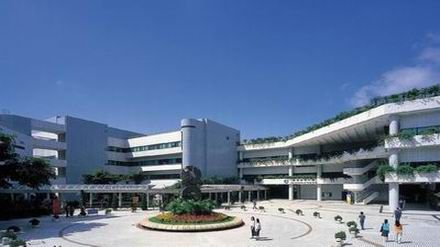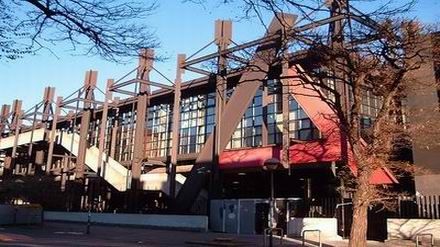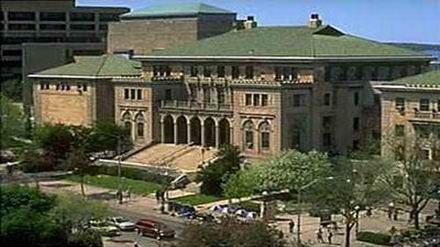出国留学网小编为大家带来2017年雅思考试模拟试题及答案(1),欢迎大家参考!更多相关内容请关注本站!
2017年雅思考试模拟试题及答案(1)
THE GAP of INGENUITY 2
Ingenuity, as I define it here, consists not only of ideas for new technologies like computers or drought-resistant crops but, more fundamentally, of ideas for better institutions and social arrangements, like efficient markets and competent governments.
How much and what kinds of ingenuity a society requires depends on a range of factors, including the society's goals and the circumstances within which it must achieve those goals——whether it has a young population or an aging one, an abundance of natural resources or a scarcity of them, an easy climate or a punishing one, whatever the case may be.
How much and what kinds of ingenuity a society supplies also depends on many factors, such as the nature of human inventiveness and understanding, the rewards an economy gives to the producers of useful knowledge, and the strength of political opposition to social and institutional reforms.
A good supply of the right kind of ingenuity is essential, but it isn't, of course, enough by itself. We know that the creation of wealth, for example, depends not only on an adequate supply of useful ideas but also on the availability of other, more conventional factors of production, like capital and labor. Similarly, prosperity, stability and justice usually depend on the resolution, or at least the containment, of major political struggles over wealth and power. Yet within our economics ingenuity often supplants labor, and growth in the stock of physical plant is usually accompanied by growth in the stock of ingenuity. And in our political systems, we need great ingenuity to set up institutions that successfully manage struggles over wealth and power. Clearly, our economic and political processes are intimately entangled with the production and use of ingenuity.
The past century’s countless incremental changes in our societies around the planet, in our technologies and our interactions with our surrounding natural environments have accumulated to create a qualitatively new world. Because these changes have accumulated slowly, It’s often hard for us to recognize how profound and sweeping they've. They include far larger and denser populations; much higher per capita consumption of natural resources; and far better and more widely available technologies for the movement of people, materials, and especially information.
In combination, these changes have sharply increased the density, intensity, and pace of our inter actions with each other; they have greatly increased the burden we place on our natural environment; and they have helped shift power from national and international institutions to individuals and subgroups, such as political special interests and ethnic factions.
As a result, people in all walks of life-from our political and business leaders to all of us in our day-to-day——must cope with much more complex, urgent, and often unpredictable circumstances. The management of our relationship with this new world requires immense and ever-increasing amounts of social and technical ingenuity. As we strive to maintain or increase our prosperity and improve the quality of our lives, we must make far more sophisticated decisions, and in less time, than ever before.
When we enhance the performance of any system, from our cars to the planet's network of financial institutions, we tend to make it more complex. Many of the natural systems critical to our well-being, like the global climate and the oceans, are extraordinarily complex to begin with. We often can't predict or manage the behavior of complex systems with much precision, because they are often very sensitive to the smallest of changes and perturbations, and their behavior can flip from one mode to another suddenly and dramatically. In general, as the human-made and natural systems we depend upon become more complex, and as our demands on them increase, the institutions and technologies we use to manage them must become more complex too, which further boosts our need for ingenuity.
The good news, though, is that the last century's stunning changes in our societies and technologies have not just increased our need for ingenuity; they have also produced a huge increase in its supply. The growth and urbanization of human populations have combined with astonishing new communication and transportation technologies to expand interactions among people and produce larger, more integrated, and more efficient markets. These changes have, in turn, vastly accelerated the generation and delivery of useful ideas.
But—and this is the critical "but"——we should not jump to the conclusion that the supply of ingenuity always increases in lockstep with our ingenuity requirement: While it's true that necessity is often the mother of invention, we can't always rely on the right kind of ingenuity appearing when and where we need it. In many cases, the complexity and speed of operation of today's vital economic, social, arid ecological systems exceed the human brains grasp. Very few of us have more than a rudimentary understanding of how these systems work. They remain fraught with countless "unknown unknowns," which makes it hard to supply the ingenuity we need to solve problems associated with these systems.
In this book, explore a wide range of other factors that will limit our ability to supply the ingenuity required in the coming century. For example, many people believe that new communication technologies strengthen democracy and will make it easier to find solutions to our societies' collective problems, but the story is less clear than it seems. The crush of information in our everyday lives is shortening our attention span, limiting the time we have to reflect on critical matters of public policy, and making policy arguments more superficial.
Modern markets and science are an important part of the story of how we supply ingenuity. Markets are critically important, because they give entrepreneurs an incentive to produce knowledge. As for science, although it seems to face no theoretical limits, at least in the foreseeable future, practical constraints often slow its progress. The cost of scientific research tends to increase as it delves deeper into nature. And science's rate of advance depends on the characteristic of the natural phenomena it investigates, simply because some phenomena are intrinsically harder to understand than others, so the production of useful new knowledge in these areas can be very slow. Consequently, there is often a critical time lag between the recognition between a problem and the delivery of sufficient ingenuity, in the form of technologies, to solve that problem. Progress in the social sciences is especially slow, for reasons we don't yet understand; but we desperately need better social scientific knowledge to build the sophisticated institutions today’s world demands.
Questions:
Complete each sentence with the appropriate answer, A, B, C, or D
Write the correct answer in boxes 27-30 on your answer sheet.
27 The definition of ingenuity
28 The requirement for ingenuity
29 The creation of social wealth
30 The stability of society
A depends on many factors including climate.
B depends on the management and solution of disputes.
C is not only of technological advance, but more of institutional renovation.
D also depends on the availability of some traditional resources.
Question 31-33
Choose the correct letter, A, B, C, or D.
Write your answers in boxes 31-33 on your answer sheet.
31 What does the author say about the incremental change of the last 100 years?
A It has become a hot scholastic discussion among environmentalists.
B Its significance is often not noticed.
C It has reshaped the natural environments we live in.
D It benefited a much larger population than ever.
32 The combination of changes has made life.
A easier
B faster
C slower
D less sophisticated
33 What does the author say about the natural systems?
A New technologies are being developed to predict change with precision.
B Natural systems are often more sophisticated than other systems.
C Minor alterations may cause natural systems to change dramatically.
D Technological developments have rendered human being more independent of natural systems.
Question 34-40
Do the following statements agree with the information given in Reading Passage 3?
In boxes 34-40 on your answer sheet, write
YES if the statement is true
NO if the statement is false
NOT GIVEN if the information is not given in the passage
34 The demand for ingenuity has been growing during the past 100 years.
35 The ingenuity we have may be inappropriate for solving problems at hand.
36 There are very few who can understand the complex systems of the present world.
37 More information will help us to make better decisions.
38 The next generation will blame the current government for their conduct.
39 Science tends to develop faster in certain areas than others.
40 Social science develops especially slowly because it is not as important as natural science.
参考译文:
创新过程的空白
创造,就像笔者在这里定义的一样,不仅仅指那些关于计算机、抗早作物之类的新科技的构想,更重要的是指那些关于优化制度和社会安排的思想,例如高效市场、法定 政府等。
一个社会需要多少创造及哪种创造,取决于多种因素,包括社会目标和达成这些社会目标时所处的社会环境一一无论它是年轻型社会还是老龄化社会:是自然物资丰富或是物资匮乏;是气候宜人或气候恶劣。
一个社会能提供多少或何种创造,同样取决于众多因素,例如人类创造和理解的本性、 有用知识的制造者所获得的经济回报、以及社会制度改革的政治反对派的力量等。
充足优质的创造非常重要,当然这还不够。例如,我们知道财富的创造不仅取决于充足 的、有价值的创意,还需要更多其他传统生产因素,如资本和劳动力。同样,繁荣、稳定、公正通常取决于对财富和权力的重大政治斗争的决议,或者至少是针对它们的遏制政策。然而目前,我们的经济创意常常将劳动力排挤在外,随着创意的增长,机器设备实体通常也随之增长。在现有的政治体系中,我们需要更多的创意来建设社会制度,从而成功地管控财富和权力斗争。很明显,我们的经济政治进程正紧密地与这些创意产物 结合在一起。
过去的一个世纪中,在我们的整个社会范围、科技领域和我们与周围自然环境的互动中产生的不计其数并不断增加的变化,己经积累到了足以创造一个高品质的新世界。由于这些变化是慢慢积累起来的,所以我们通常很难认识到它们所影响的深度与广度。这些变化波及了更广泛、更密集的人群,它们使得人均自然资源消耗变得更高,并提供了更有效、更广泛的交通运输技术,尤其是信息传播技术。
总的来说,这些变化已经大大增加了我们彼此互动的深度、强度和速度:但也显著增加 了人类对自然环境造成的负担;同时也促使人类社会将权力从国家和国际组织转移到 个人和群体组织中,例如特殊政治利益和民族派别。
因此,来自不同领域的人们——从政治经济领袖到我们日常生活中的普通人——必须 应对更为复杂、紧迫、甚至不可预料的社会环境。我们需要大量的、不断增长的社会和 技术创新来处理我们与新世界的关系。当人类努力保持或增强社会繁荣、提高生活质量时,我们必须在比以往更短的时间内做出更精确的决策。
从汽车到环球金融网络,我们再提升任何一个体系的效能时,都会不由自主地把它复杂化。人类赖以生存的自然环境体系通常也是相当复杂的,例如全球气候和海洋。由于这些复杂体系对微小扰动极其敏感,系统表现可以从一种模式急剧切换到另一种模式,所以人类很难精确预测它们的各种变化。通常,当我们赖以生存的人造体系和自然体系越来越复杂时,当我们对这些生存体系的要求越来越多时,我们用来控制这些体系的制度和科技也会越来越复杂,而这则会进一步增强我们对创意的需求。
好消息是,在社会与技术发生巨大变革的上个世纪中,我们不进增加了对创意的需求, 也创造出了大量的创意.随着人口的增加、城市化进程的加速,新的通讯和物流技术也迅速增长,这大大拓展了人与人之间的交流,并催生了更广泛、更综合、更高效的市场: 反过来,这些变化在很大程度上也加速了这个创意时代的思潮解放。
但是——用批判的眼光来看——我们不能直接得出结论说,我们的创意能一直跟上需求的脚步:虽然说需求是创造之母,但我们不能总指望在我们有需要的时候,恰好就有相应的创造产生。今天,在许多情况中,经济、社会、生态系统运转的复杂性和速度, 都远远超出了人类大脑的应变范围。大部分人对这些系统的运转原理都知之甚少,人们仍然充满了数不胜数的“未知的未知”,这些未知使得人们很难创造出充足的创意来解决生活体系中的种种问题。
本书中,笔者研究分析了那些可能在新世纪中制约我们设计创意能力的各种因素。例如,许多人认为新的信息技术增强了社会民主性,并使得人们解决社会群体事件变得更容易,但事实似乎并非如此.日常生活中的信息拥塞反而分散了我们的注意力,减少了 人们对公共政治等重要事件的思考时间,并使得政治观点更加表面化。
现代市场和科学是我们创意设计的重要组成部分。市场的重要性在于,它为企业家创造 知识提供了经济动力。对于科学来说,尽管似乎没什么理论限制,但在实践环节上的制约会减缓科学的实现进程,至少在今后一段时间内都会如此。随着科学研究的深入, 其成本也在逐渐上升。同时,科学的进步速率取决于人们研究的自然现象的特征,有些现象或领域就是比其他的现象或领域难,所以这些领域中的知识进步会非常缓慢。因此,在人们发现问题到提供解决问题的创意或技术之间,通常会有一段很长的滞后期。由于某些未知的原因,社会科学的进步尤其缓慢:但我们迫切需要更好的社会科学理论,以建立起符合现代世界需求的庞大制度体系。





 湘公网安备 43011102001150号
湘公网安备 43011102001150号

